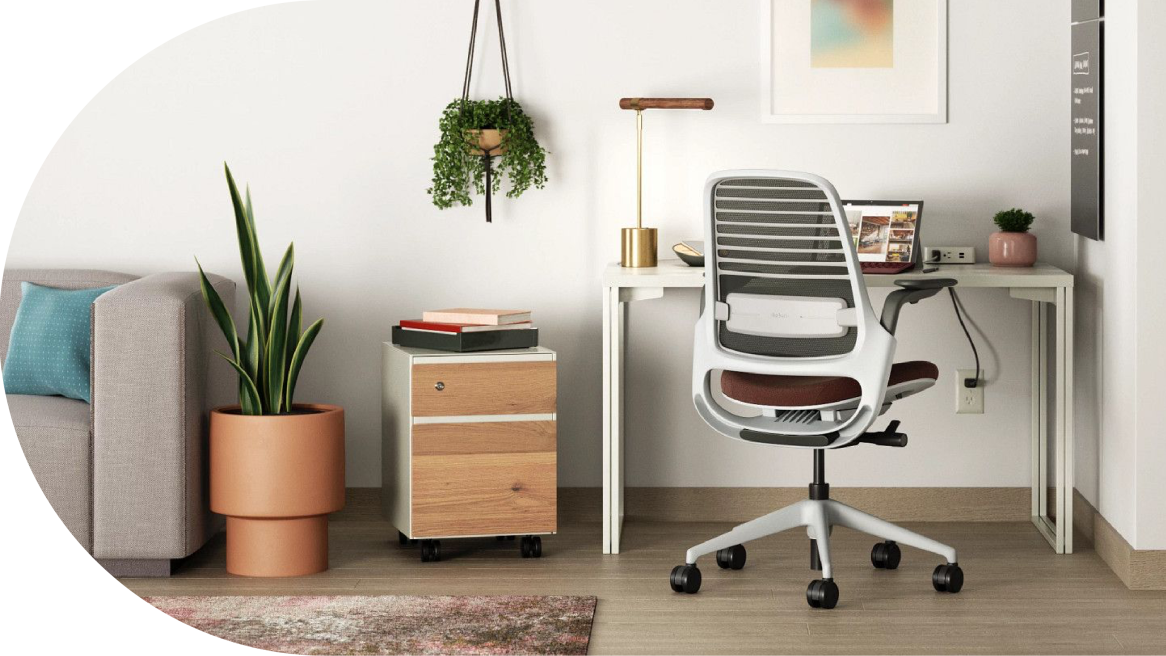This article is part of a series of updates to “Navigating What’s Next: The Post-COVID Workplace.”
The work-from-home honeymoon started to go stale for most of us at about five weeks of doing it full-time. Before the crisis only 5% of us typically worked from home most of the time, and 71% of us worked at home on occasion — less than two days a month according to a recent Steelcase study. When we found ourselves suddenly there all-day, every day, we just weren’t prepared for what lay ahead.
“Only about one third of the people we surveyed report they were able to work effectively.”
Caroline Kelly
Steelcase WorkSpace Futures Manager
“People faced a lot of challenges that impacted both their engagement and productivity,” says Caroline Kelly, Steelcase WorkSpace Future manager. A global Steelcase study found that people who have access to the right furniture and work tools, are significantly more engaged, more productive and feel they have the resources they need to do their work.
In Search of Comfort
The data confirms most workers do not have an ideal home setup.
![]()
Individual contributors who work primarily or almost always at a desk. People who live in smaller homes are even less likely to work at a desk.
![]()
Reported they would describe their workspace as comfortable. People with an ergonomic chair were more likely to report they have a comfortable workspace, yet only 24% of individual contributors reported having one.
![]()
Have a secondary monitor – important for the prevention of neck and eye strain.
“The sudden nature of the pandemic forced people to make due with what they had — a dining table, the couch, even their bed,” says Kelly. “But now that many people will continue to work from home in some capacity in the future, it’s important to provide them with ergonomic seating and effective work tools to be comfortable and productive and help avoid injury from poor posture, repetitive movements, eye strain, etc.”
Tips For Creating Work-From-Home Spaces
For most organizations, our homes will become part of an expanded ecosystem of places where people will continue to work some of the time. While everyone faces their own set of challenges and home sizes can vary drastically, providing ergonomic support and maximizing space — even small ones — help create workspaces at home that are more comfortable, enhance productivity and boost wellbeing.
Find the best place to work
Consider background noise, visual distractions and the level of privacy you need to focus.
Are you able to control lighting and temperature so you can work comfortably?
Can you keep confidential information out of sight?
Look for a place that has access to natural light and greenery - it will make you feel better.
Choose a good ergonomic chair
A good, ergonomic chair will flex with you – helping you change postures while you sit.
The backrest of the chair should fit the natural contour of your back and to maintain healthy alignment as you sit.
As you recline, a chair’s seat and backrest should move as you do – opening up your hip angle and bringing you closer to a healthy sitting posture.
Provide comfort where you need it most. Contoured foam and a flexible edge provide pressure-free comfort for sit bones, glutes and thighs.
The arms of your chair should stay parallel to the floor while you recline – keeping your arms straight on your desk and your eyes level with your screen.
Intuitive and easy-to-use back, seat and arm adjustments make a chair feel like it is made for you and your body.
Sit (or stand) properly at your desk
Choose a desk or worksurface that can accommodate your laptop, keyboard, mouse, phone, etc. The worksurface should be elbow height in a seated posture.
Consider a height-adjustable desk so you can change posture: sit, stand and move. Add an Active Lift Riser to a stationary desk or worksurface to give you the option to change postures from sitting to standing.
Clear enough space for your knees so you can slide your chair close to your work.

Add computer support tools to improve ergonomics
A monitor arm puts screens in the right position in any posture, reducing eye and muscle strain, increasing user comfort and creating a healthier and more productive workspace.
A keyboard platform keeps your external keyboard and mouse on the same horizontal surface and appropriate height for correct ergonomic positioning.
A footrest lets you stand or sit more comfortably while working and helps maintain good posture.
A mobile laptop support allows you to position a laptop at a height that’s both ergonomically correct and comfortable.
Home Inspiration
These home offices are designed to help you work better at home — whether you work in a small, shared space, a large dedicated office or an enhanced living space, you won’t mind working in one of these home offices:
Small Spaces
A productive office in a compact area, transforms rooms into hard-working spaces.
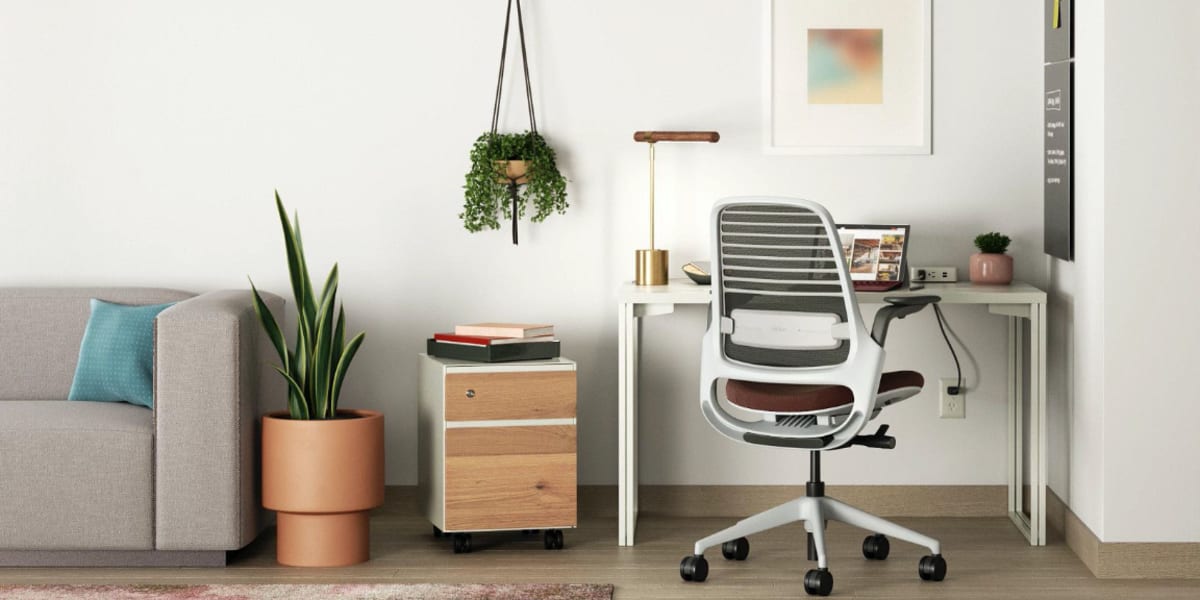 Open image tooltip
Open image tooltipFocus on solo work at home without taking up too much real estate.
The compact size and light, minimalist aesthetic of the West Elm Work Greenpoint desk and storage blends into any home environment – living room, spare bedroom or dedicated office. The Steelcase Series 1 chair provides ergonomic support and the West Elm Work Greenpoint mobile ped keeps reference documents and supplies close by. The West Elm Work Linear Wood task light provides additional lighting on the worksurface.
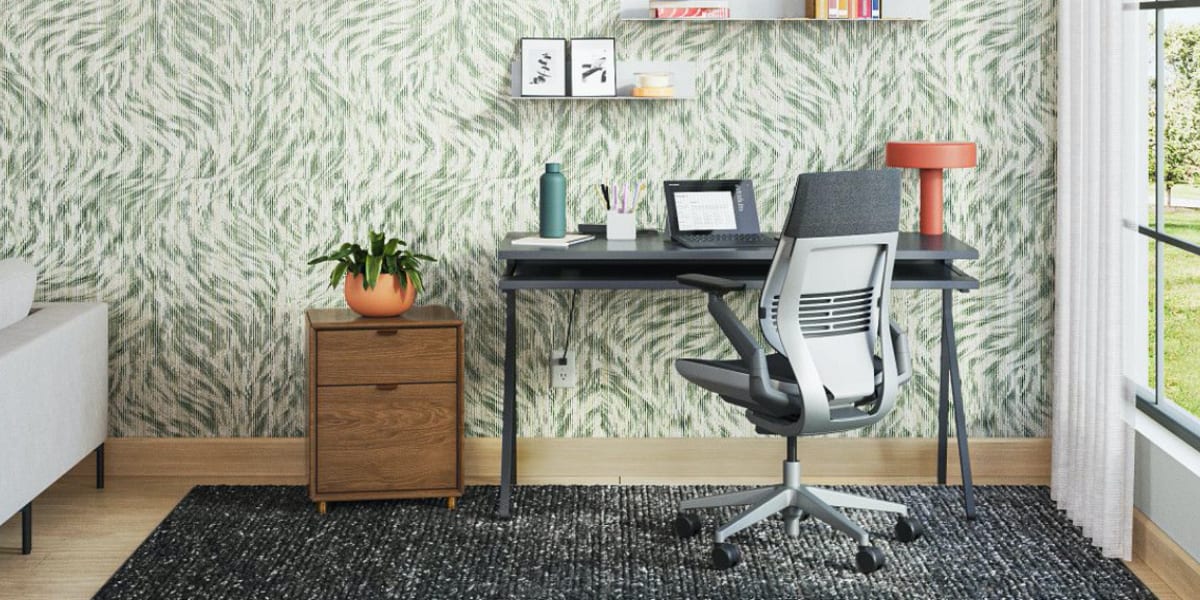 Open image tooltip
Open image tooltipFor intense focus work, the high performance Gesture chair keeps you comfortable and supported all day.
The Blu Dot Desk 51 has a more residential aesthetic that can easily be added to any existing space. Blu Dot Welf shelves provide a place to display personal items and help keep the worksurface clear to give people more room to work.
Dedicated Spaces
A high-performing office in a larger, dedicated space.
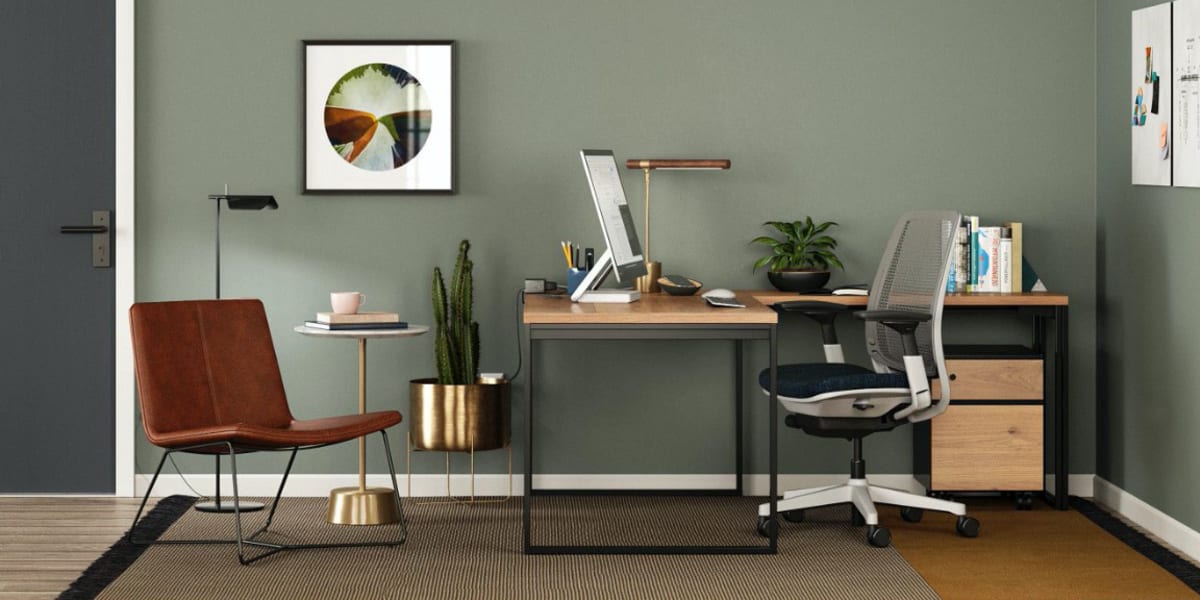 Open image tooltip
Open image tooltipThe West Elm Work Greenpoint desk provides ample space to spread out everything you need to work.
There’s also room to display books and artifacts, while mobile storage keeps documents organized and out of sight. The Amia Air chair’s specially-engineered geometric design in the backrest offers flexibility – encouraging healthy movement and providing support for posture changes.
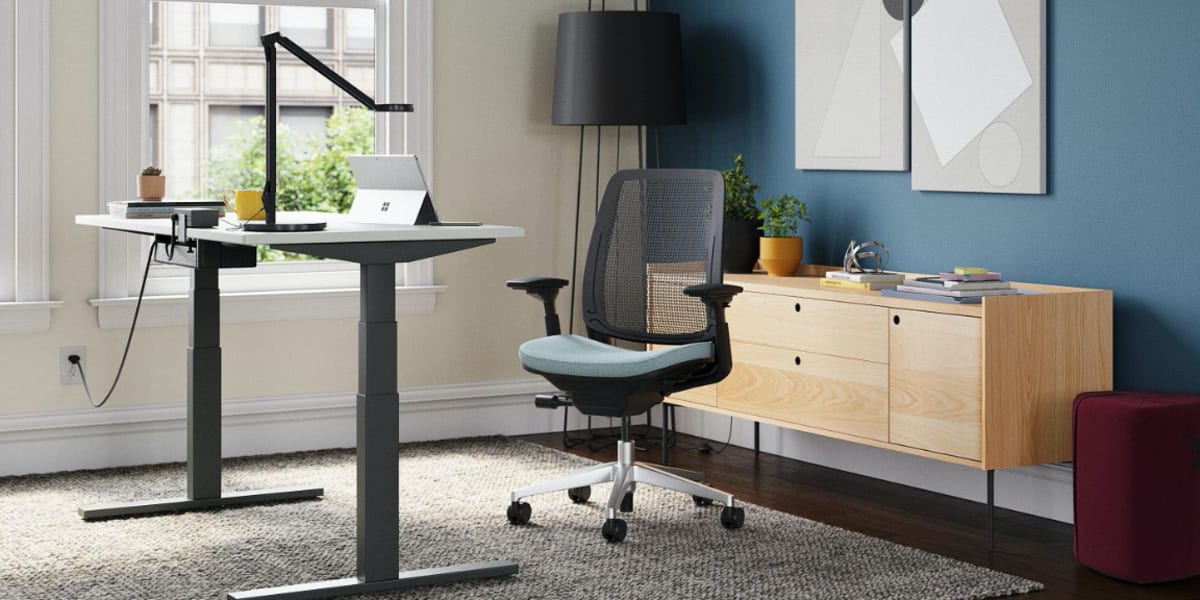 Open image tooltip
Open image tooltipCombine performance and expression.
The Migration SE height-adjustable desk allows you to sit or stand throughout the day, while the Amia Air chair provides ergonomic comfort and support. The Blu Dot Peek console gives you a place to store reference materials and supplies, as well as display personal items.
Enhanced Living Spaces
Upgrade a current living space to accommodate the demands of work to make the workday more productive.
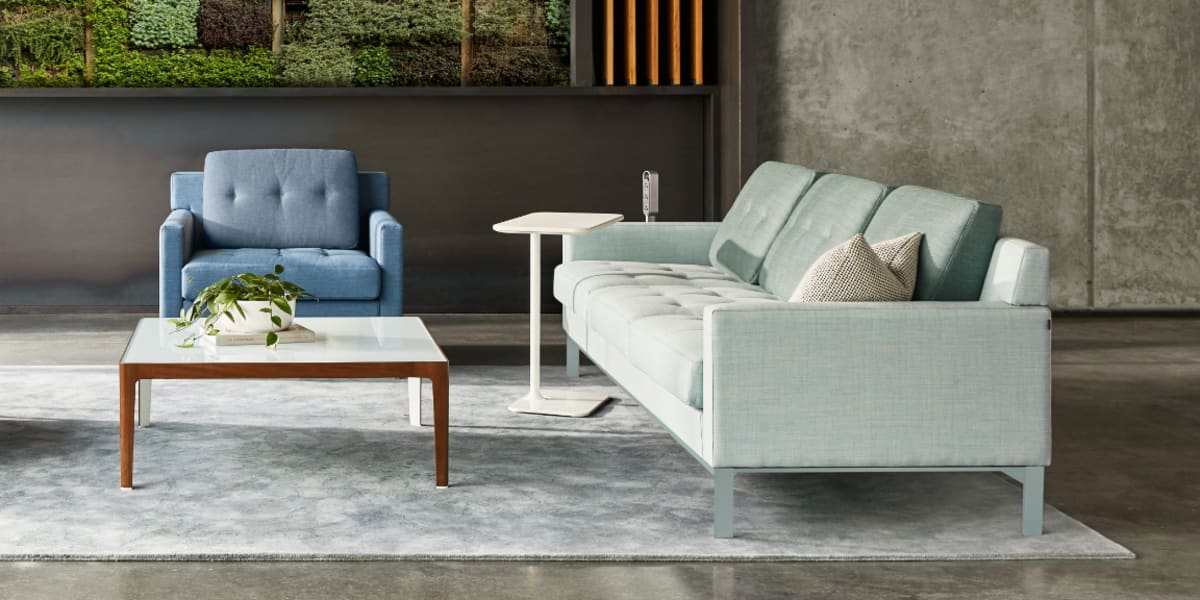 Open image tooltip
Open image tooltipTransform a living area into a productive workspace.
Lagunitas tables are designed with careful consideration for the postures and dimensions of the seating to create a comfortable experience for whatever task is at hand. Thread makes it easy to stay powered and working without distractions.
How to order
PERSONAL PURCHASES
For personal purchases, you can buy products on demand, delivered directly to you through Steelcase Store.
Corporate Programs
For corporate purchases to support work-from-home programs, whether company or employee funded, Steelcase has numerous personalized options to help outfit your employees with home office solutions designed to work directly with your company’s procurement system (contact your local Steelcase or dealer representative for more information).

